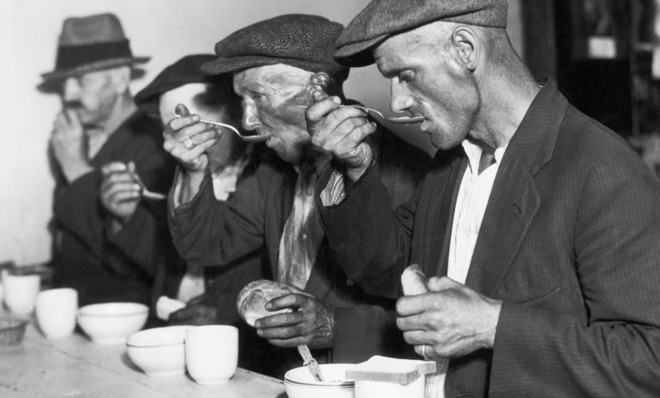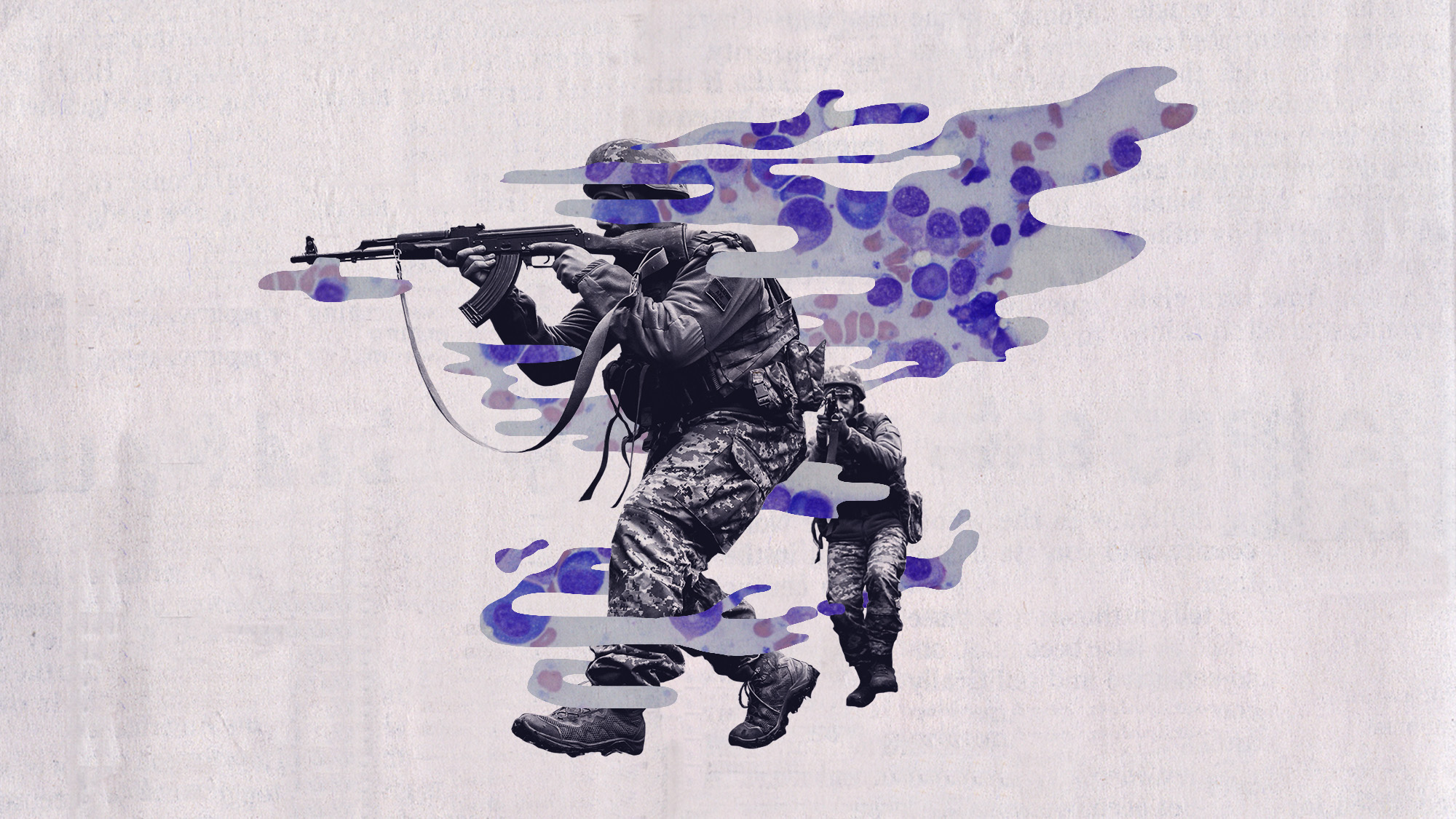When pundits blamed white people for a 'culture of poverty'
For as long as there have been poor people, there have also been non-poor people standing nearby and theorizing their cultural inferiority

For the last couple of weeks, Ta-Nehisi Coates and Jonathan Chait have been in a heated debate about black culture and poverty. Throughout the discussion, Chait seems to have confusingly moved between "culture of poverty" and "black culture" as if the two are the same, a conflation Coates points out in his latest piece. This conflation is endemic in almost all discussions of poverty and is the most glaring problem with the Paul Ryan statement that instigated the entire Coates-Chait debate.
Our discourse around poverty, and particularly the so-called "culture of poverty," often proceeds as if most poor people are black and most black people are poor. Neither is true. In 2012, 46.5 million people fell below the official poverty line. Within that 46.5 million, there were 1.9 million Asians, 10.9 million blacks, 13.6 million Latinos, and 18.9 million whites. Although black people have the highest poverty rate at 27.2 percent (barely above the Latino poverty rate of 25.6 percent), black poverty accounts for less than one-fourth of U.S. poverty.
Thus, most of what is said about black culture and black poverty fails to address three-fourths of the overall problem. What causes black poverty rates to be so elevated is an important discussion to have, but it is a much narrower one than most people seem to think. If black poverty rates were as low as white poverty rates, that would amount to seven million fewer people in the ranks of the impoverished. To reiterate: There are 46.5 million people currently below the official poverty line. Seven million people is a lot of people, but it is not the totality of the American poverty problem, not even close.
The Week
Escape your echo chamber. Get the facts behind the news, plus analysis from multiple perspectives.

Sign up for The Week's Free Newsletters
From our morning news briefing to a weekly Good News Newsletter, get the best of The Week delivered directly to your inbox.
From our morning news briefing to a weekly Good News Newsletter, get the best of The Week delivered directly to your inbox.
Due to their sheer numbers, there have always been more poor whites in this country than poor people of any other race. However, in the last half-century especially, conservative race-baiters have done their best to cast poverty as a black problem as a way to drive sentiment against welfare programs. This effort has resulted in the black-focused poverty discourse that continues to dominate political commentary on the issue.
But this hasn't always been the case. If you look into the distant past, you can find writings specifically on the topic of white poverty and its causes. What's remarkable about these old writings on white poverty is how similar they are to present-day writings about black poverty. Whereas today the pundit class goes on and on about the supposed black culture of poverty, not too long ago they were going on and on about the supposed white culture of poverty.
For instance, in one 1947 paper, Duke professor Edgar Thompson took on the claim forwarded by some doctors of the era that the problems of poor whites were caused by the fact that they were riddled with chronic diseases like hookworm. Thompson argued that these doctors have the whole thing backwards:
The probability remains that hookworm is itself symptomatic of an even more basic condition. This is, not inherent laziness, but a tradition of improvidence, moral degeneracy, lack of ambition, and indifference to profitable labor. It is a tradition traceable to social and economic factors in the poor white's connections with the rest of the community. What is missing is a sense of purpose or a clear-cut conception of the meaning of his existence. His state of aimlessness, of purposelessness, and of footlooseneess expresses itself not merely in laziness and general inefficiency, but also in demoralizing habits, crime, insanity, and disease.
Edgar Thompson said about poor whites in 1947 exactly what Paul Ryan is saying about poor blacks today. Thompson's "tradition of … indifference to profitable labor" is Ryan's "generations of men not even thinking about working." Both Thompson and Ryan reject social and economic causes of poverty in favor of a theory that puts the onus on some especially deviant and somehow resilient subculture of vice and laziness.
A free daily email with the biggest news stories of the day – and the best features from TheWeek.com
If we push further back in time, we find even more of this sort of theorizing. In Dixie's Forgotten People, Wayne Flynt details accounts left by Freedman's Bureau workers about poor whites, some of which declare that "poor whites lacked ambition; they were violent, sexually promiscuous people who did not respect human life." We even saw the rhetoric across the sea during the Irish famine, which a number of English aristocrats chalked up to the defective character of Irish people.
In other words, anywhere you find poor people, you also find non-poor people theorizing their cultural inferiority and dysfunction. Maybe it's the case that all of these groups of poor people were "born lazy and had a relapse," a joke Edgar Thompson tells about poor whites in the South. However, the more likely reality is that theories of cultural inferiority spring out of the fevered imaginations of those who desperately seek to justify unconscionable economic disparities.
The culture of poverty rhetoric, whether used in relation to whites in the past or black in the present, is carefully calibrated to place the blame for poverty on the poor themselves and to deny that anything can be done politically to reduce the material hardships of the least among us. While this rhetoric serves the interests of those whose economic share might be reduced by a vigorous anti-poverty program, it also happens to be wrong.
-
 Antibiotic resistance: the hidden danger on Ukraine’s frontlines
Antibiotic resistance: the hidden danger on Ukraine’s frontlinesUnder The Radar Threat is spreading beyond war zones to the ‘doorstep’ of western Europe
-
 ‘Capitalism: A Global History’ by Sven Beckert and ‘American Canto’ by Olivia Nuzzi
‘Capitalism: A Global History’ by Sven Beckert and ‘American Canto’ by Olivia NuzziFeature A consummate history of capitalism and a memoir from the journalist who fell in love with RFK Jr.
-
 Who will the new limits on student loans affect?
Who will the new limits on student loans affect?The Explainer The Trump administration is imposing new limits for federal student loans starting on July 1, 2026